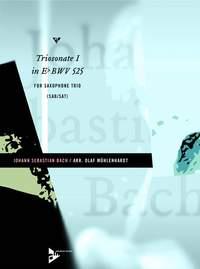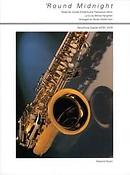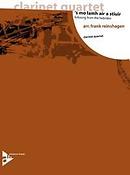Bach: Triosonate I in Eb BWV 525

- Componist:Bach, Johann Sebastian
- Uitgever:Advance Music
- Instrument(en): Saxofoon (3)
- Periode: Barok
- Series: Saxofoon Trio
- Bezetting: Saxofoon Trio
- Genre: Klassiek
- Soort: Set (Partituur, Losse Partijen)
- Uitgeversnummer: ADV 7731
- ISBN: 9790206301230
- ISMN: 979-0-2063-0123-0
Prijs € 21,30
Wensenlijst
Wensenlijst
Bel voor advies: 0342-419197
Informatie
Bach composed the Trio Sonatas for organ BWV 525 – 530 between 1727 and 1730 when he was Thomaskantor in Leipzig. Bach’s first biographer Johannn Nikolaus Forkel states that he composed them for his son Wilhelm Friedemann, “who had to practice them in order to become the great organist he later turned into. One cannot say enough about their beauty.“ As early as the middle of the 18th century, the first arrangement for violin, Cello and bass was written. Countless versions for other instruments followed. Mozart arranged three movements for violin, viola and Cello. In the 20th century Bartók and Kabalevsky made versions for piano solo.The trio sonata as a baroque genre usually employs four players: two solo parts (violin, flute or oboe), a bass part (Cello, violone or bassoon) and the continuo part (organ, harpsichord or flute). Bach’s Sonatas for organ require highly independent hands and feet and subtle differentiation to portray the three parts as two individual instruments accompanied by a bass line. Obviously, the pedal part is not as virtuosic as it would be for the left hand of a keyboard player. And that makes it even more suitable for a less experienced tenor or baritone saxophone player in the present edition.To give those players who are not yet familiar with baroque music some ideas, I have included a few suggestions. Bach gave tempo instructions for all but the first movement. The metronome markings provide some orientation; the players should adjust the tempo according to their musical taste and capabilities. Except for the slurs at the beginning of the second movement, there are no further articulations in the manuscript. The articulations in this edition do not need to be taken literally; a slur does not always mean legato – it rather represents a musical unit; slight tonguing won’t hurt the line. Likewise, the staccato dots do not always indicate short notes – they show upbeats which are not clearly visible, syncopations which could use emphasis or simply suggest separated eight notes (like in the theme of 1st movement). In general, larger intervals should be separated more clearly ; one will have to determine if they are accompaniment figures in argeggios (as is often the case in the bass part) or melodically significant lines. As the movements progress, the articulations in parallel or simi-lar passages were left out. A lot can be learned from this sonata, not only in regard to phrasing and articulation. And it is an extraordinary pleasure to play and perform it – the movements could hardly be more diverse in mood and character. To quote Forkel again: “One cannot say enough about their beauty.“ Olaf Mühlenhardt, 3/2005Gerelateerde producten
- Telefonisch advies & bestellen
- 14 dagen bedenktijd
- Gratis retourneren
- Korting voor Docenten, koren of verenigingen
- Vanaf 30 euro = gratis verzenden
- Achteraf betalen













